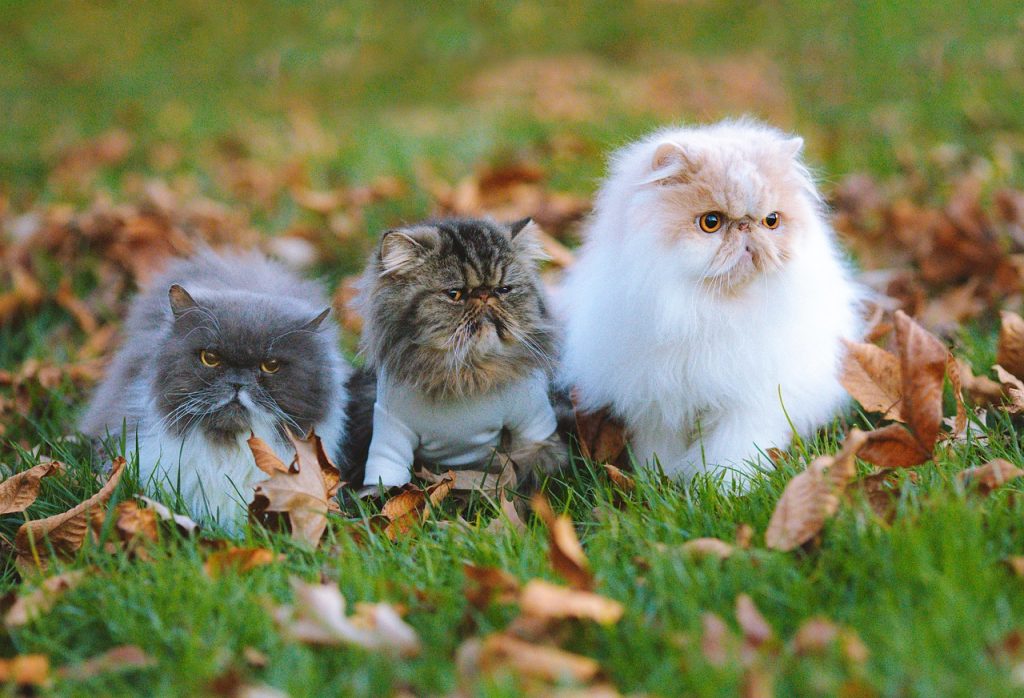Training Persian cats requires patience, consistency, and understanding of their unique personalities and needs. While Persian cats are known for their calm demeanor and affectionate nature, they are also independent and can sometimes be stubborn. This makes training them a challenge for many pet owners, but with the right techniques and understanding, training your Persian cat can be a rewarding and successful experience.
This comprehensive guide will cover everything you need to know about training Persian cats, including basic training, behavioral issues, tips for positive reinforcement, and how to handle breed-specific quirks. Whether you’re training a kitten or an adult Persian cat, this guide will help you establish a well-behaved and well-adjusted feline companion.
1. Why Is Training Important for Persian Cats?
Training is essential for all pets, including Persian cats. While they are generally calm and good-natured, Persian cats can develop behavioral problems if they are not properly trained. In addition to fostering a positive relationship between you and your cat, training can help to:
- Strengthen Bonding: Training helps you and your Persian cat communicate effectively, which strengthens the bond between you. Cats are social creatures and thrive on human interaction, so positive training experiences can bring you closer together.
- Prevent Behavioral Issues: Proper training can help prevent common behavioral problems, such as inappropriate scratching, furniture damage, or house soiling.
- Improve Safety: Training your Persian cat to follow basic commands, such as “come” or “no,” can help keep them safe in situations where you need to control their behavior (for example, when they are near a dangerous object or in an unsafe area).
- Enhance Mental Stimulation: Cats, including Persian cats, need mental stimulation to stay engaged and happy. Training provides an outlet for this, reducing the likelihood of boredom-induced behavior issues.
2. Understanding Persian Cat Behavior
Before diving into specific training methods, it’s important to understand the natural instincts and behaviors of Persian cats. Persian cats are known for their laid-back, calm personalities, but they also have some unique traits that influence how they respond to training.
2.1. The Personality of Persian Cats
- Calm and Affectionate: Persian cats are known for their quiet and affectionate nature. They often enjoy being pampered, and they tend to form strong bonds with their owners. While they are affectionate, they are also independent and may not always seek constant attention.
- Low Energy: Persian cats are not as active as some other breeds. They prefer a calm, relaxed environment and may not engage in high-energy activities or excessive play.
- Sensitive: Persian cats are sensitive and may not respond well to harsh training methods. Positive reinforcement and gentle, consistent training are the best ways to teach them.
2.2. Typical Persian Cat Behavior
- Low Play Drive: Persian cats do not have the same high play drive as other more active breeds. They may not engage in fetch or other active play, but they may enjoy interactive toys or gentle games.
- Stubbornness: Persian cats can be a bit stubborn at times, especially when they feel uninterested in the training task. Patience is key when working with this breed.
- Affectionate but Independent: Persian cats enjoy their human companions but are not as needy as some other breeds. They like attention on their own terms but will let you know when they want affection.
3. Basic Training Techniques for Persian Cats
Training a Persian cat requires patience and consistency. While Persian cats are not known for being “trick performers” like some other breeds, they can be taught basic commands and behaviors using the right approach. The following training techniques are effective for teaching Persian cats basic behaviors:
3.1. Positive Reinforcement
- What It Is: Positive reinforcement involves rewarding desired behavior with something your cat enjoys, such as treats, praise, or petting. This encourages your cat to repeat the behavior.
- Why It Works: Persian cats, like most cats, respond well to positive reinforcement. This technique is based on rewarding them for doing something you want them to do, rather than punishing unwanted behavior.
- How to Use It: When training your Persian cat, immediately reward them with a treat or affection after they perform the desired action. This helps them associate the behavior with something positive.
3.2. Clicker Training
Clicker training is a method that uses a small handheld device that makes a clicking sound to signal to your cat that they’ve done something right. The sound of the click is immediately followed by a reward, reinforcing the behavior.
- How to Use Clicker Training: Start by getting your cat accustomed to the sound of the clicker. Once they associate the sound with a reward, you can begin using the clicker to reinforce specific behaviors, such as sitting on command or using the litter box.
3.3. Training for Litter Box Use
Persian cats are typically clean animals and are easy to litter train, but there are a few things to keep in mind to ensure success:
- Choosing the Right Litter Box: Persian cats are not fond of high-sided or overly large litter boxes. A low-entry box with clean, unscented litter is ideal.
- Location Matters: Place the litter box in a quiet, easily accessible area. Cats prefer to use their litter boxes in a private, low-traffic area.
- Rewarding Success: Every time your Persian cat uses the litter box correctly, reward them with a treat or praise. This will reinforce the behavior.
3.4. Training Basic Commands
Training your Persian cat to respond to basic commands can be fun and practical. The following commands can be taught with patience and consistency:
- Sit: Hold a treat in front of your Persian cat’s nose and slowly move it upwards. When their bottom touches the ground, immediately reward them.
- Come: Start by calling your cat’s name in a soft, encouraging voice while holding a treat. Once your cat comes to you, reward them immediately.
- No: Use a firm, consistent “no” when your cat engages in undesirable behavior, such as scratching furniture or jumping on counters. Afterward, redirect their attention to a more appropriate behavior (e.g., scratching on a scratching post).

4. Dealing with Behavioral Issues in Persian Cats
Though Persian cats are generally well-mannered, they may still develop behavioral issues that require training and behavior modification. Here are some common issues and how to address them:
4.1. Scratching Furniture
Scratching is a natural behavior for cats, and Persian cats are no exception. To prevent furniture damage:
- Provide Scratching Posts: Ensure your Persian cat has access to a variety of scratching posts and pads. These should be placed in areas where your cat already likes to scratch.
- Use Cat Repellents: If your cat continues to scratch furniture, try using cat-safe repellents or covering the area with double-sided tape to discourage scratching.
- Redirect Behavior: When your Persian cat starts scratching furniture, gently redirect them to the scratching post and reward them when they use it.
4.2. Aggression or Biting
If your Persian cat becomes aggressive or starts biting during play or petting, it may be due to overstimulation or fear. Here’s how to manage this behavior:
- Identify Triggers: Pay attention to when your cat becomes aggressive—this may be during play or when they’ve had enough petting. Understanding the triggers can help you avoid aggressive behavior.
- Use Positive Reinforcement: Reward your Persian cat for calm behavior, such as sitting quietly or engaging in gentle play.
- Avoid Punishment: Never physically punish your cat for biting. This can damage your relationship with them and worsen the behavior.
4.3. Excessive Meowing
While Persian cats are generally quiet, some may meow excessively, especially if they are bored or want attention. To reduce excessive meowing:
- Provide Enrichment: Make sure your Persian cat has plenty of stimulation, such as toys, climbing trees, or puzzle feeders.
- Ignore the Behavior: Avoid giving attention when your cat meows excessively. Instead, reward them for calm behavior, reinforcing that quietness leads to attention.
5. Advanced Training for Persian Cats
Once your Persian cat has mastered basic commands, you can move on to more advanced training. While Persian cats may not be as interested in performing tricks as some other breeds, they are capable of learning more complex tasks with patience and consistency.
5.1. Walking on a Leash
Training your Persian cat to walk on a leash is a great way to give them some outdoor time while keeping them safe. Here’s how to do it:
- Introduce the Harness: Start by getting your Persian cat used to wearing a harness. Let them wear it indoors for short periods, gradually increasing the duration.
- Leash Training: Once your cat is comfortable with the harness, attach the leash and let them explore indoors. Once they are comfortable, you can try short walks outside.
5.2. Trick Training
While not all Persian cats will be interested in tricks, some may enjoy learning simple actions like “high five” or “roll over.” Use positive reinforcement and break down the trick into small steps. Reward your cat every time they perform the action correctly.
6. Conclusion: Patience, Consistency, and Positive Reinforcement for a Well-Behaved Persian Cat
Training your Persian cat requires time, patience, and consistency. While Persian cats are often more independent than other breeds, they are still capable of learning basic commands and behaviors when trained with gentle, positive methods. By using rewards and providing a calm, enriching environment, you can train your Persian cat to be well-mannered, healthy, and happy.
With the right approach, training can become a rewarding part of your relationship with your Persian cat, enhancing your bond and helping them become a well-behaved and contented companion.























































